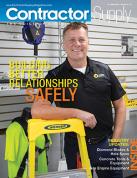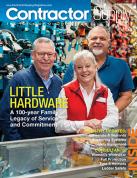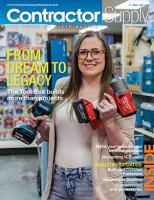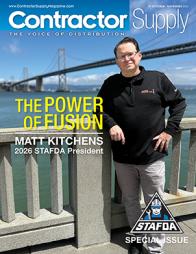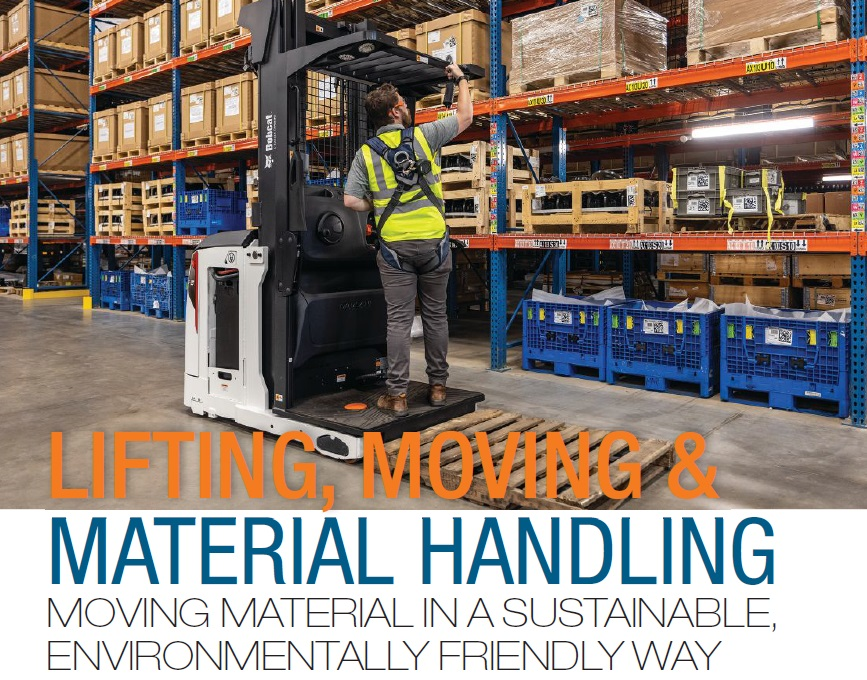
With the price of fuel continuing to rise and more requests by customers for sutainable or environmentally friendly operations, construction contractors are looking for new solutions. For some manufacturers, the answer was found in the electrification of their equipment, from hand held devices up to the larger earthmoving and material handling units. Whatever the fuel source, these manufacturers are answering the call to ensure materials on a jobsite can be lifted, moved and secured safely.
BOBCAT COMPANY
Electrification is transforming the material handling industry, which has used electrically powered industrial vehicles since the 1970s.
Lithium-ion cells enable more flexible forklift designs and smarter technology, including predictive maintenance and embedded sensors for tracking equipment health.
Bobcat Company offers a full range of electric, liquid propane, diesel, and dual-fuel forklifts. Andre Marshall, material handling product manager, says the company continues to invest in material handling innovations, with recent hydrogen fuel cell-powered forklift prototypes as it empowers its customers to do more.
Known for their affordability and proven performance, lead-acid batteries have long been standard. Marshall says the lithium-ion technology, popularized by companies like Tesla, is increasingly adopted, especially in regions like Asia and Europe where they make up 50%-60% of Class III product sales. Class III includes electric pallet jacks, stackers, and tow tractors, which are essential for moving loads efficiently in various operational settings.
“Class III products are extremely popular in the supply chain due to their low price point, intuitive use, and diverse operation ability,” Marshall says.
Lithium-ion batteries offer a longer lifespan, approximately seven years, compared to lead-acid batteries, and require less maintenance.
“They don’t need to be swapped out and thrive on the opportunity of charging during breaks or idle time without damaging the battery or reducing its lifespan, making them ideal for operations with multiple shifts,” Marshall says. “As their costs decrease due to economies of scale, their use is expanding to Class I and II applications.”
Overall, Marshall says more of the industry is shifting towards electrification and smart technologies, focusing on efficiency, safety, and productivity.
 |
| Jet Tool’s SkyHyker redefines industry standards for material lifts, providing a lifting capacity of 2,000 pounds, 33% more than comparable models. |
JET TOOLS
JET Tools recently introduced SkyHyker, an industrial material lift engineered for ease of operation, mobility, and safety even on the toughest job sites.
Boasting a reinforced T-bar design, maximizing strength and stability, the SkyHyker’s integrated non-freefall worm gear winch ensures safety with every operation. Also, operation with the dual-variable speed winches is restricted to the safe lifting position and includes improved ergonomics and conveniently located service points for maintenance.
“With SkyHyker, JET Tools is raising the bar for material lifts in the industry,” said Nathan O’Sullivan, product manager at JET Tools. “SkyHyker is designed with the user in mind, incorporating features that directly address the challenges faced in industrial settings.”
SkyHyker has a lifting capacity of 2,000 pounds, approximately 33% more than comparable lifts. In addition, it offers a telescoping load capability of 1,000 pounds.
“Every aspect of SkyHyker has been meticulously engineered to make work easier, more efficient, and safer,” O’Sullivan said. “At JET Tools we are committed to delivering products that not only meet but exceed industry standards, ensuring our customers can rely on us for the highest quality and performance in their material lifting needs.”
Out of the box, SkyHyker is a one-time setup, reducing the possibility of lost parts during storage. The patent-pending foldable design pivots between work and travel modes without disassembly and allows the lift to fit through a standard doorway.
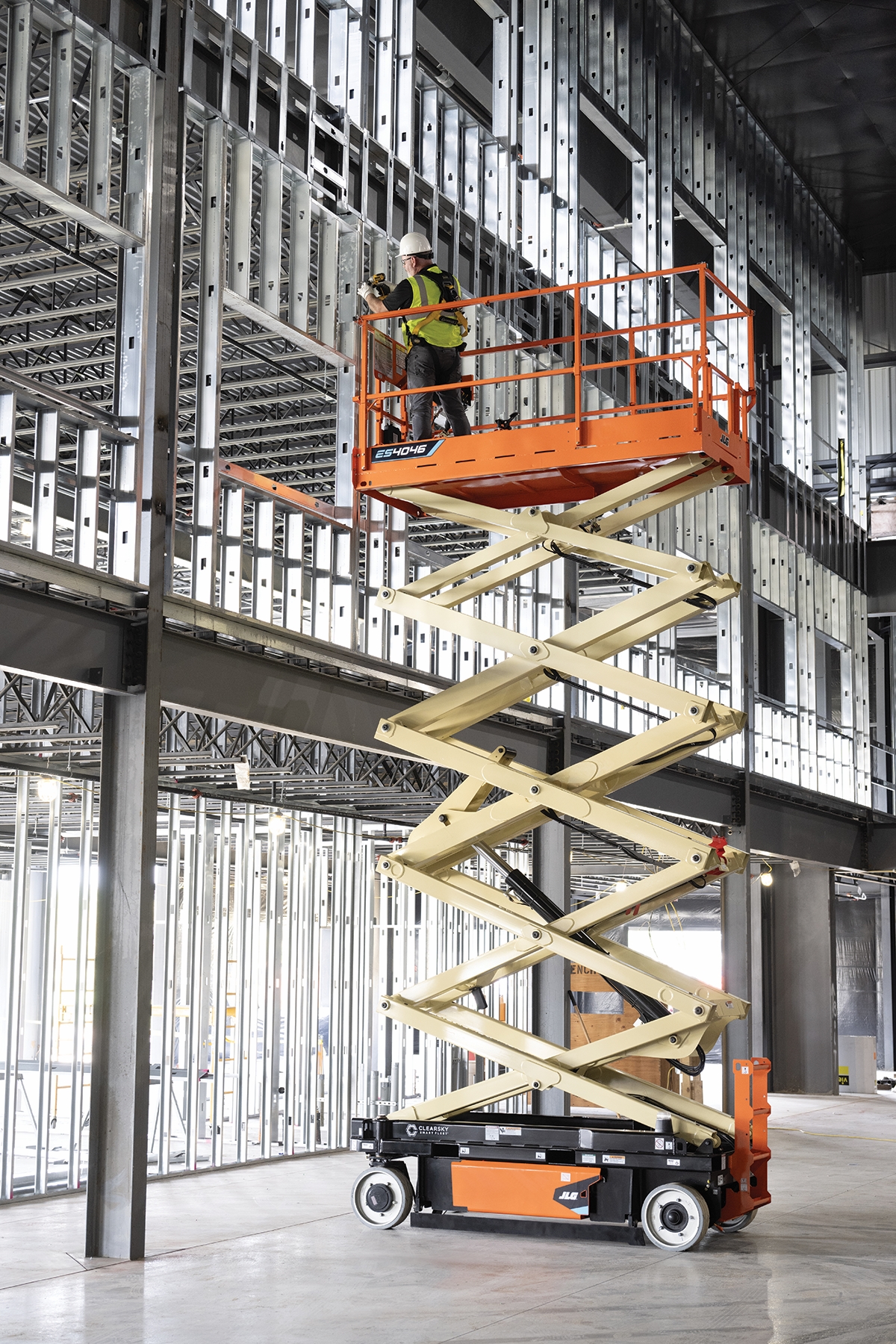 |
| Developed with customer feedback, JLG’s ES4046 is the highest ES Series scissor lift, measuring at 39 feet platform height indoors (up to 28.5 feet outdoors), while simultaneously being the lowest gross-weight scissor in its class. |
JLG
The MEWP industry is focused on adopting connected and sustainable technologies, with increasing demand for compact and higher-capacity equipment driven by electrification, urbanization, and productivity needs.
Craig Edwards, vice president of strategic accounts, at JLG, says population growth and a larger percentage of families gravitating towards city centers, results in taller buildings with narrower space between them.
“With that, the demand for compact equipment, higher capacity models, and higher reaching machines is rising — everything from micro scissor lifts to ultra boom lifts,” he says.
JLG’s smallest scissor lifts, the 13-, 15- and 19-foot models. Its mid-sized boom lifts, the 40-, 60- and 80-foot models, are spec’d for work in urban areas.
“For these models, it’s not only for the environmental benefits but also for the desire to reduce the total cost of ownership,” Edwards says.
Advances in battery technology, particularly the shift from FLA to lithium-ion batteries have been significant.
For example, all-electric scissor lifts, like the JLG DaVinci lift, powered by lithium-ion batteries, rather than traditional flooded lead acid (FLA), will lower overall TCO by 30%-40%
Automation, connectivity and active safety technologies, like mobile control, are also rising.
“The integration of robotics with MEWPs for repetitive and hazardous tasks is anticipated in the future,” Edwards says.
 |
| Ensuring every hoist is manually tested to meet its rigorous manufacturing standards, Atlas Lifting & Rigging has carved a niche for itself within the industry. |
ATLAS LIFTING & RIGGING
In the flooded market of lifting equipment, Houston-based Atlas Lifting & Rigging (ALR) has carved a niche for itself by focusing on quality and consistency.
“We aren’t just another company that slaps a brand label on generic products,” says Doug Ozolins, ALR executive vice president and partner. “We take pride in our state-of-the-art manufacturing facility, where virtually all hoist components are produced in-house.”
“The goal was clear: create a product that can endure any environment, offer it at a fair price, and keep it readily available,” Ozolins says. “By cutting out the middleman, ALR has brought to market a superior quality hoist that is reliable and affordable.”
Maintaining a large inventory ensures customers get what they need when they need it.
“By listening to our customers and responding to their needs, we have positioned ourselves as a leader in the hoist industry,” Ozolins says. “Our commitment to quality, availability, and affordability is evident in every product we offer.”
In addition, ALR launched the Hoistek line of premium economy hoists from its India-based facilities. The Hoistek line is designed to be the highest quality hoist available at the most economical price. This product line caters to customers who seek top-tier performance without breaking the bank.
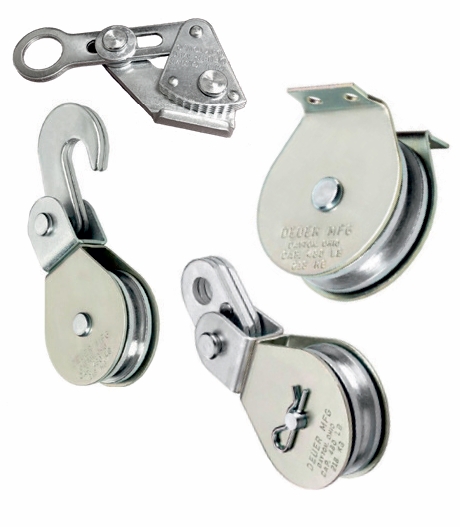 |
| With durable materials and Made-in-America products, Deuer Manufacturing is recognized for the quality of its come-alongs, blocks and sheaves. |
DEUER MANUFACTURING
Established in 1960, Deuer Manufacturing Inc. is recognized in the industry as a leader in the manufacturing of come-alongs, blocks and sheaves.
These come in a variety of styles and load capacities including eye (swivel), flange (fixed), gable (fixed), hook (swivel), and scissor hook (swivel). Also, the sheaves have a self-lubricating bronze bushing.
The division of come alongs, blocks, and sheaves was purchased by the current owner in 2004. Deuer Manufacturing kept the employees for the division and continues to grow based on the skills of its employees and products.
When combining durable materials and employees who take pride in their work, the outcome is Made-in-America products that customers repeatedly say are of the highest quality, reliable, and long-lasting.
Features include heavy-duty steel construction, zinc-plated or powder-coated for corrosion resistance, and removable sheaves for fast rigging.
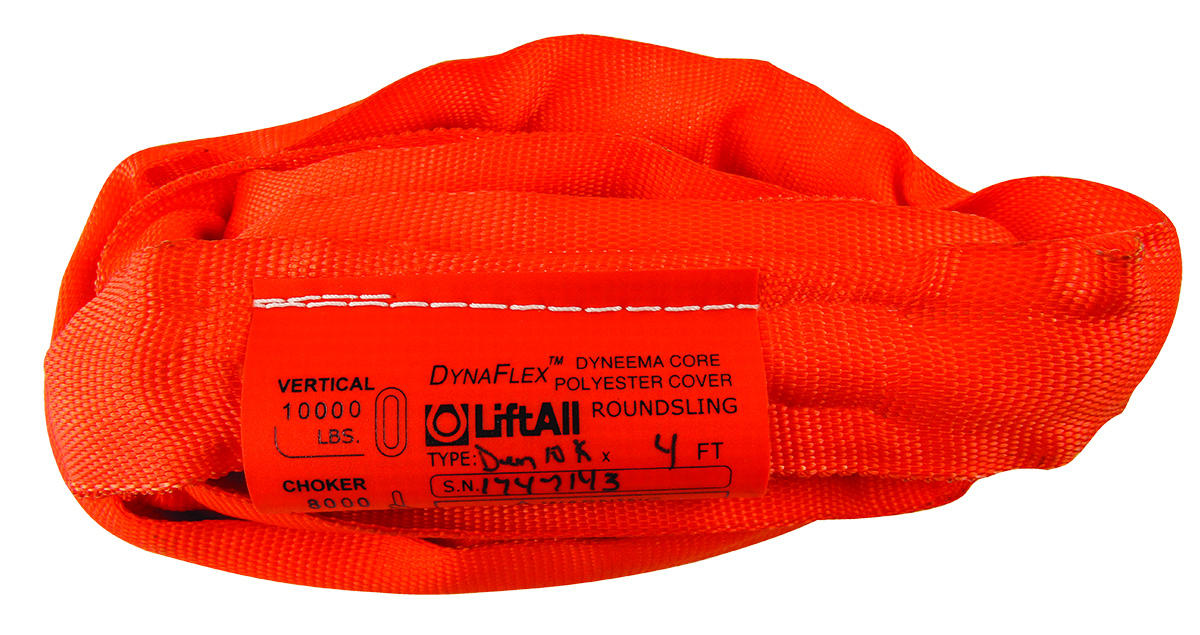 |
| Lift-All high-performance roundslings provide a solution for lifting heavy loads, while using a lightweight, flexible, and ergonomic sling. |
LIFT-ALL
Lift-All, an American company for 60 years, manufactures a complete line of round slings that meet or exceed specific lifting applications.
Jason Dively, vice president of sales, says DynaFlex, a high-performance round sling is manufactured with a load-bearing core Dyneema, which Lift-All describes as “the world’s strongest fiber.”
Also, the single-path design allows higher strength retention around common rigging hardware, saving time during hook-up to the connection point and rigging versus dual-path slings.
Dively says DynaFlex is a great choice for water recovery and lifting applications as well because of its natural buoyancy.
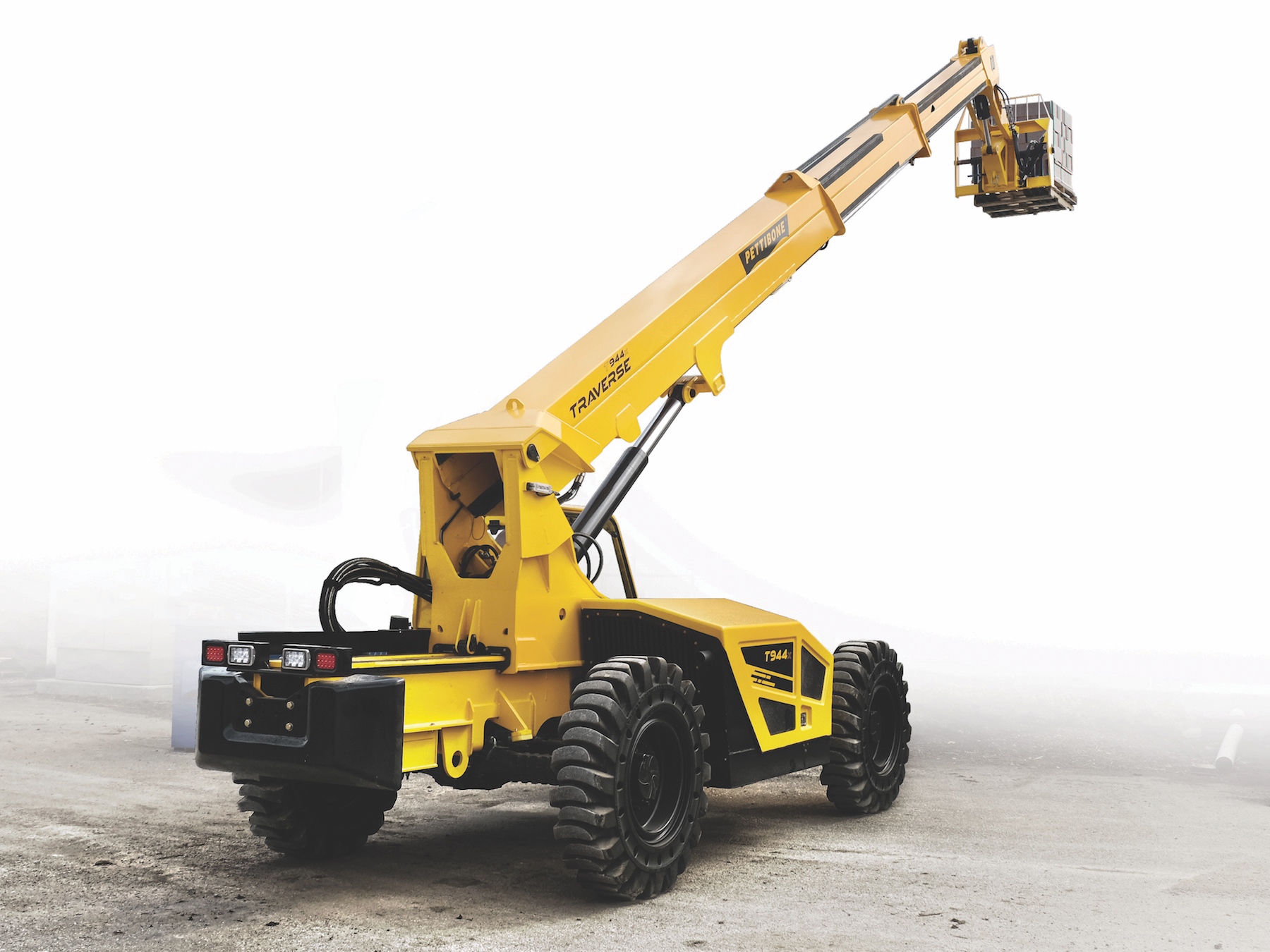 |
| The Pettibone Traverse T944X telehandler features an extendable, traversing boom that moves loads by traveling horizontally up to 70 inches. |
PETTIBONE
Telehandler manufacturers continue to emphasize safety and simplified maintenance within the overall machine design.
Tim Palosaari, product management analyst at Pettibone, says operator visibility is a big focus.
Some telehandlers are promoted as having excellent visibility from the cab, but seemingly clear sightlines can vanish once the machine is put into a real working situation. Ideally, the telehandler’s chassis and boom structures should be designed to provide visibility in all directions around the machine.
Pettibone is still the only manufacturer producing a telehandler with a horizontally sliding boom. All models in the Pettibone Traverse lineup offer up to 70 inches of traversing boom movement, allowing users to safely land loads without coordinating multiple boom functions.
Palosaari says telematics software, which helps identify and address any issues occurring with the machine before they become serious problems, has become increasingly prevalent for telehandlers. Certain issues can be diagnosed using a telematics dashboard via a computer or smartphone. This is particularly beneficial for field technicians who can learn more information before they arrive to fix it.
Pettibone’s X-Command telematics program is a standard feature for two years on Pettibone’s X-Series Extendo and Traverse telehandlers. Palosaari says X-Command allows owners to review equipment data and generate reports to plan future maintenance.
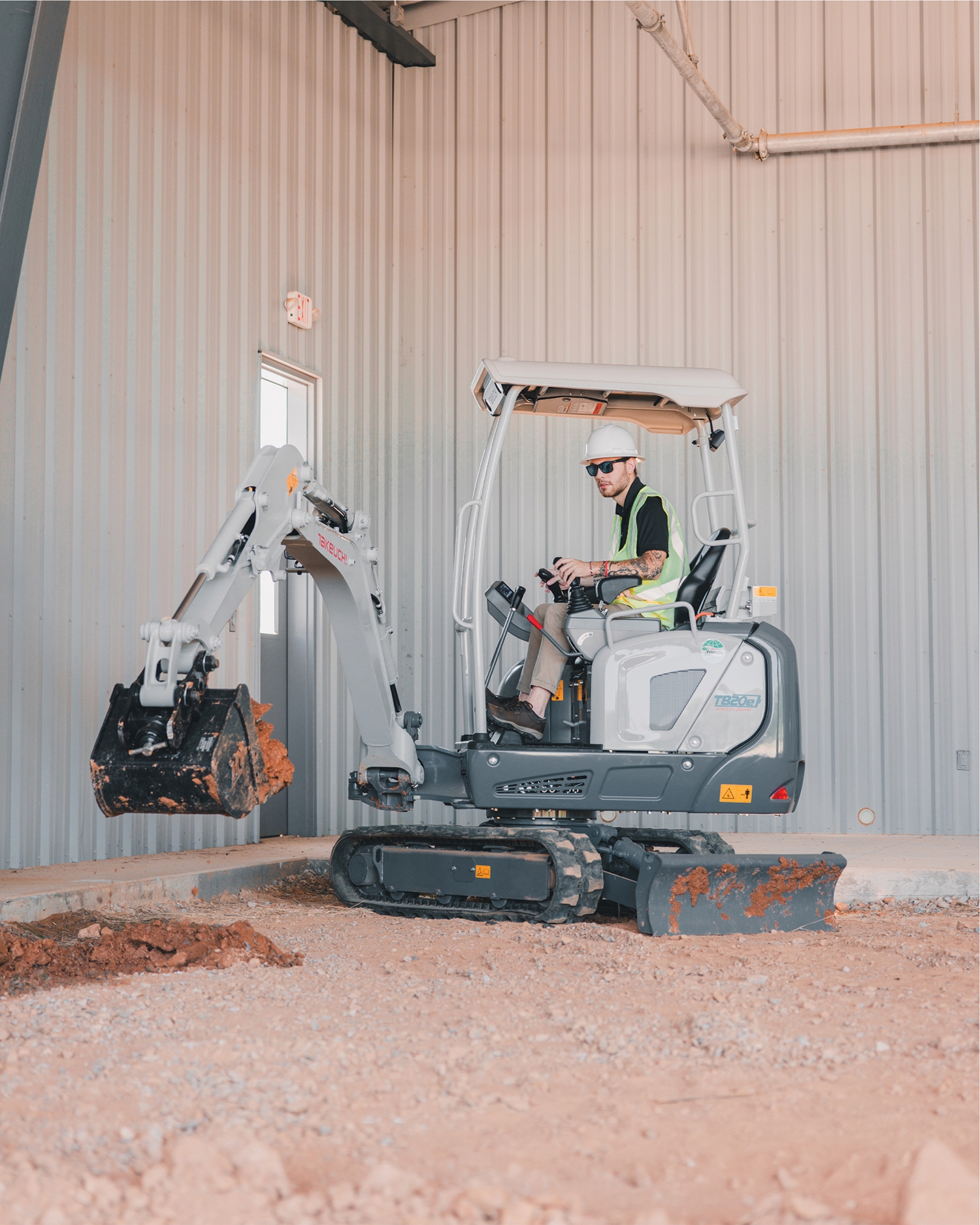 |
| Similar in performance to Takeuchi’s diesel-powered TB216 compact excavator, the TB20e is powered by lithium-ion battery. It will run anywhere from four to eight hours, depending on the application. |
TAKEUCHI
Lee Padgett, product manager, Takeuchi-US says there is no denying the growing demand for material handling/earthmoving equipment that runs on clean energy with zero emission operations.
He says this type of electric or hybrid equipment is useful for places like schools, food service, hospitals, and inside warehouses to improve air quality and reduce noise pollution.
One example is the TB20e, Takeuchi’s first designed-and-built, battery-powered compact excavator. Introduced in 2023, Padgett says the TB20e is designed to help contractors meet their own sustainability goals without sacrificing the performance and reliability they deserve and expect.
“Zero exhaust emissions and reduced noise/vibration levels make the TB20e an environmentally friendly, sustainable choice when working or around residential neighborhoods, municipalities, schools, and hospitals,” he says.
Another innovation that helps contractors do more with less is the tiltrotator.
Designed for use on certain compact excavator models, Padgett says tiltrotators eliminate the need for more workers on-site and saves time. Its ability to tilt and rotate allows the operator to work in any direction without repositioning the machine.
This article originally appeared in the October/November 2024 issue of Contractor Supply magazine. Copyright, 2024 Direct Business Media.
LEARN MORE |







